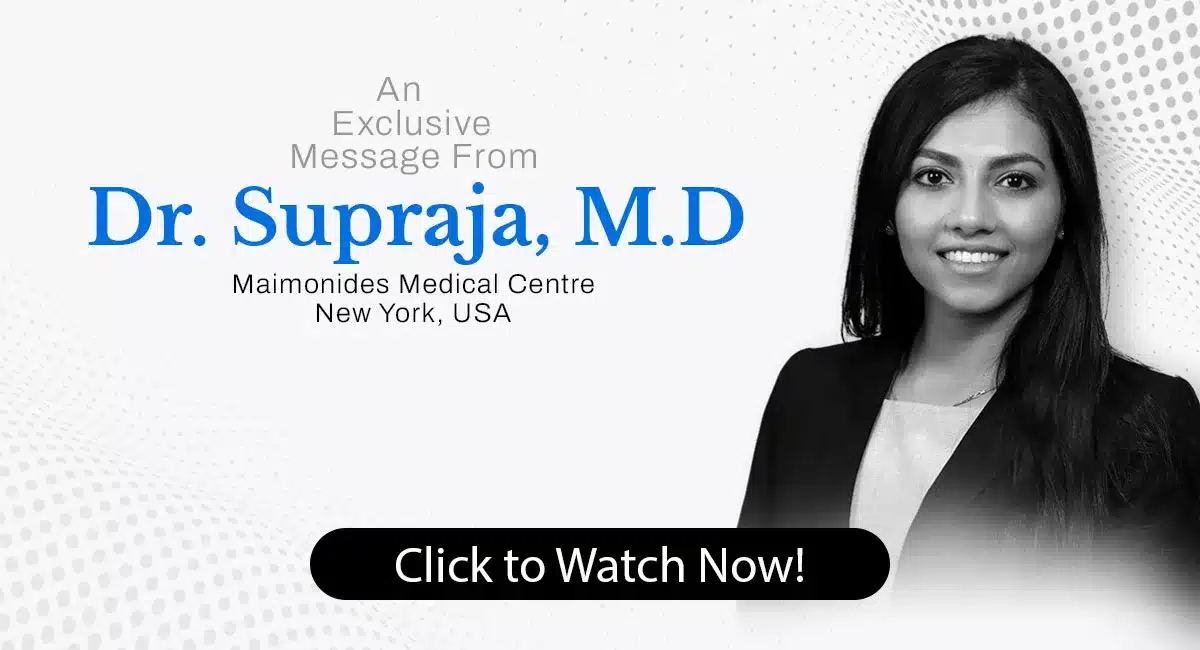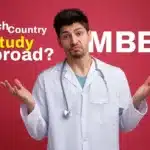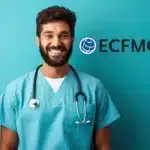For Indian students aspiring to pursue medical education in the United States, understanding the intricacies of the application process, financial planning, and the transition from MBBS to MD is crucial. This guide provides comprehensive insights into strategic application planning, financial considerations, eligibility criteria, and choosing the right medical college, paving the way for a successful medical career in the USA.
Key Takeaways
- Early and strategic planning, including understanding the MBBS to MD pathway and preparation for exams like USMLE, is essential for Indian students aiming for U.S. medical schools.
- Financial planning is critical, with the cost of medical education in the USA being high; however, scholarships and financial aid opportunities can help alleviate some of the burden.
- Eligibility criteria for Indian students include completion of pre-medical coursework, English proficiency tests, and a strong academic record.
- Choosing the right medical college involves considering factors such as fit with career goals, public vs. private institutions, and utilizing consultancies for informed decision-making.
- Navigating visa applications and understanding the long-term commitment required for medical education in the USA are important aspects of the journey for Indian students.
Understanding the Application Process for U.S. Medical Colleges

Familiarizing with Primary and Secondary Applications
The journey to study MBBS in the USA begins with a comprehensive understanding of the application process. Indian students must navigate through a series of steps, each critical to securing a place in a U.S. medical school. Initially, students should familiarize themselves with the primary application, which often includes the AMCAS, AACOMAS, or TMDSAS, depending on the school’s affiliation.
Following the primary application, candidates encounter the secondary application stage. This involves completing individual applications for each medical school, detailing reasons for their interest in the institution. It’s a chance to tailor your application to each school’s unique aspects and demonstrate your fit for their program.
Early preparation is crucial, as it allows for the tailoring of applications and understanding the nuances of each medical school’s requirements.
Submitting applications to multiple schools is key for acceptance, ensuring a broad range of opportunities. To aid in this process, here is a suggested distribution of applications:
- Reach Schools: 2-3
- Match Schools: 3-4
- Safety Schools: 2-3
By following these steps and utilizing resources such as student consultancies, Indian students can enhance their chances of acceptance into U.S. medical programs and take a significant step towards realizing their MBBS dreams.
Navigating Entrance Exams and Requirements
For Indian students aspiring to study medicine in the USA, navigating entrance exams is a pivotal step in the application process. The MCAT (Medical College Admission Test) is often a central requirement for U.S. medical schools. Alongside the MCAT, students must demonstrate English proficiency through tests like TOEFL or IELTS, and submit academic transcripts and letters of recommendation.
Entrance exams not only assess academic readiness but also serve as a gateway to global education opportunities. It is essential to understand the specific requirements of your chosen country and institution.
Here are some general steps to help you navigate this process:
- Research and understand the specific admission requirements for your target MD programs.
- Prepare for and complete any required standardized tests, such as the MCAT.
- Seek opportunities for clinical experience and research to strengthen your application.
- Apply to multiple programs to increase your chances of acceptance.
- Engage with a global professional network to gain insights and advice.
Utilizing the Fast Track MD Program
The Fast Track MD Program is a beacon of hope for Indian students aiming to practice medicine in the United States. It offers a streamlined path to an MD degree, bypassing the need for the MCAT and condensing the journey into a shorter timeframe. This program is particularly advantageous for those seeking a more assured entry into the U.S. medical system and aiming for higher salary prospects compared to practicing in India.
Eligibility for this program hinges on a strong foundation in science subjects from the 12th grade and proficiency in English. Here are the essential steps for Indian students considering the Fast Track MD Program:
- Completion of 12th grade with a focus on science subjects
- Proficiency in English, often demonstrated through TOEFL or IELTS
- A minimum GPA and pre-medical coursework, as required by the program
The Fast Track MD Program not only accelerates the educational process but also enhances the chances of securing a residency match in the U.S. by providing valuable clinical experience.
For those who meet the eligibility criteria, the Fast Track MD Program can be a strategic choice, offering a direct route to medical practice in the USA. It is essential, however, to carefully consider the long-term commitment and to understand the nuances of the U.S. healthcare system.
Strategic Planning for Indian Students

Early Preparation for Standardized Tests
For Indian students aiming to study medicine in the USA, early preparation for standardized tests is a pivotal step. The journey begins with understanding the structure and content of exams like the MCAT, GRE, and USMLE. Gathering the right study materials and resources is essential for a robust preparation strategy.
To aid in this process, here’s a list of essential resources for MCAT preparation:
- Official AAMC materials
- Comprehensive review books
- Online practice tests
- Study groups or tutoring
Strategic planning and tailored applications are crucial for success in U.S. medical schools.
Additionally, balancing a rigorous study schedule with self-care is vital to maintain well-being throughout the preparation phase. It’s important to reach out to mentors or professionals who have successfully navigated these exams for guidance and support.
Seeking Clinical Experience and Research Opportunities
Gaining hands-on clinical experience and engaging in research are pivotal steps for Indian students aiming to apply to U.S. medical colleges. Exploring clinical roles, such as medical scribe or patient care assistant, can provide valuable insights into the healthcare system. Professional development through workshops and conferences is also beneficial for understanding the practical aspects of medicine.
Adhering to visa regulations is essential when seeking these opportunities. It’s important to strategically choose activities that showcase a commitment to medicine and strengthen the medical school application. For instance, the duration of a research internship abroad, especially in the U.S., is typically 9 weeks for international students.
Here are some steps to consider when seeking clinical and research opportunities:
- Research and understand the eligibility criteria for clinical roles and research internships.
- Acquire relevant certifications or training that may be required.
- Network with professionals and alumni to discover opportunities.
- Prepare and organize application materials well in advance.
Proactive engagement in clinical and research activities not only enriches your knowledge but also demonstrates your dedication to a medical career.
By following these steps and utilizing resources such as student consultancies, Indian students can enhance their chances of acceptance into U.S. medical programs.
Balancing Reach, Match, and Safety Schools
When Indian students consider applying to medical colleges in the USA, it’s crucial to balance their selection of reach, match, and safety schools. Reach schools are those where admission is not guaranteed due to highly competitive profiles; these institutions often have low acceptance rates and require exceptional academic and extracurricular achievements. Match schools align closely with a student’s qualifications, offering a reasonable chance of acceptance. Safety schools are those where a student’s credentials exceed the school’s average admitted profile, ensuring a high likelihood of admission.
To optimize the application process, students should research each category thoroughly and select an appropriate number of colleges from each. Here’s a suggested distribution:
- Reach Schools: 2-3
- Match Schools: 3-4
- Safety Schools: 2-3
It’s crucial to submit applications to as many universities as possible to increase your chances of acceptance. This does not mean compromising on quality; rather, it’s about widening your net within the realm of schools that align with your career goals and academic profile.
By strategically selecting schools and understanding their unique requirements, students can enhance their prospects of acceptance. Utilizing tools like spreadsheets or dedicated software can help track progress and ensure no detail is overlooked. A balanced approach to school selection, coupled with meticulous preparation of application components, can transform challenges into stepping stones towards achieving your MBBS dreams in America.
Financial Considerations for Studying Medicine in the USA

Exploring Scholarships and Financial Aid
Securing scholarships and financial aid is a pivotal step for Indian students to manage the high costs of medical education in the USA. Start your search early and utilize resources such as university financial aid offices, educational consultancies, and online databases to identify opportunities that align with your profile.
Types of scholarships available include government, university, merit-based, subject-specific, and private scholarships. It’s essential to research thoroughly and understand the eligibility criteria for each scholarship, as they may vary in terms of academic achievement, English proficiency, and nationality requirements.
By proactively seeking scholarships and financial aid, students can significantly reduce the financial burden of medical school.
Here is a list of steps to enhance your scholarship search:
- Utilize school resources and scholarship search tools.
- Begin your scholarship search at least a year in advance.
- Research various scholarship options offered by the US government, universities, and organizations.
- Check and meet all eligibility criteria before applying.
Remember, never assume you won’t qualify for financial aid; many students miss out simply because they don’t apply. A strategic approach to financial planning, including a mix of scholarships and potential loans, can make the dream of studying medicine in the USA more attainable for Indian students.
Budgeting for Medical School Expenses
Budgeting for medical school in the USA is a critical step for Indian students after 12th grade. It involves a comprehensive understanding of all the costs associated with pursuing an MBBS degree abroad. Tuition fees are just the beginning; students must also account for living expenses, books, insurance, and other miscellaneous costs. A practical approach to budgeting includes listing all potential income sources and expenses to create a realistic financial plan.
For a clearer picture, consider the following estimated annual costs for an international student:
- Tuition: Varies significantly by institution
- Accommodation: $6,000 – $14,000
- Living expenses: $10,000 – $18,000
- Books and study materials: $400 – $1,000
- Health insurance: $700 – $1,100
It’s essential to factor in additional costs such as medical insurance, examination fees, and expenses related to clinical rotations or internships. Institutional loans and scholarships may be available, and most international students access funding through their school or private loans. Check your target school’s website for information on international student scholarships and funding opportunities.
Financial planning is not just about covering costs, but also about exploring opportunities for scholarships and financial aid to ease the burden.
Understanding the Return on Investment
When Indian students consider the financial implications of studying medicine in the USA, understanding the return on investment (ROI) is paramount. The ROI is a measure of the potential financial rewards against the cost of the medical education. It’s essential to evaluate not only the immediate expenses but also the long-term earning potential after graduation.
Medical education in the USA is a significant investment, with costs ranging from $200,000 to $300,000. However, the average salary for physicians in the USA can be quite high, often justifying the initial expenditure. Here’s a quick comparison to illustrate the ROI:
| Expense Type | Amount (USD) |
|---|---|
| Education Cost | $200,000 – $300,000 |
| Average Physician Salary | $200,000 – $300,000/year |
The decision to study medicine in the USA should be based on a careful analysis of both the costs involved and the potential for a lucrative career post-graduation.
While scholarships and financial aid can help alleviate some of the burden, it’s the long-term career prospects that often tip the scales in favor of studying abroad. Graduates with an MD from the USA are recognized globally, which opens doors to diverse opportunities and the possibility of higher salaries compared to many other countries.
Choosing the Right Medical College in the USA

Assessing Academic and Clinical Training Programs
When choosing a medical college in the USA, Indian students must critically evaluate the academic and clinical training programs offered. The quality of education and hands-on experience gained during clinical rotations are pivotal to a medical student’s success. It is essential to research the curriculum, faculty qualifications, and the variety of clinical settings available.
Specialization options should also be a key consideration. Many U.S. medical colleges offer diverse specializations, allowing students to tailor their education to their career aspirations. Here’s a list of factors to consider when assessing programs:
- Accreditation of the medical school
- Faculty-to-student ratio
- Research opportunities and facilities
- Diversity of clinical rotation sites
- Post-graduation residency placement rates
Selecting a program that aligns with your professional goals and provides comprehensive training will set the foundation for a successful career in medicine.
Evaluating Global Recognition and Opportunities
When choosing a medical college in the USA, Indian students must consider the global recognition and opportunities that come with their degree. A degree from a well-regarded institution can open doors to practice medicine in countries like the US, Canada, and Australia. This recognition allows Indian medical graduates to practice medicine in countries that require WFME accreditation, positioning India as a significant contributor to the global healthcare workforce.
Global Opportunities for Medical Graduates:
- Career Opportunities in the USA
- Career Opportunities in Canada
- Career Opportunities in Australia
- Job Opportunities After MS in the UK
- Job Opportunities After MBA in Germany
The choice of medical college should align with the student’s long-term career goals and aspirations for international practice.
Evaluating the academic reputation, clinical training quality, and research facilities of a medical college is crucial. Prospective students should research the partner universities and their global standings, such as Chandigarh University and James Cook University, Brisbane Campus. The goal is to ensure that the education and qualifications gained will be respected and recognized internationally, facilitating a smooth transition into the global healthcare system.
Considering Location and Campus Culture
The choice of location for your medical studies is more than just a backdrop for education; it’s the environment where you will live, learn, and grow. Selecting a medical college in the USA involves considering both the academic rigor and the campus culture that aligns with your personal and professional aspirations.
For instance, institutions like Stanford University are known for their liberal and academically oriented culture, which can greatly influence your daily life and interactions. The climate, local norms, and social dynamics are all factors that can impact your overall experience.
- Vibe of Campus: Friendly, Fun loving, Liberal
- Student Life Ratings:
- Internships: 4/5
- Part-time work: 4.5/5
- Post-study jobs: 4.5/5
- Quality of faculty: 5/5
- Student Life: 5/5
- Value for money: 3.5/5
- Public transportation: 3.5/5
- Safety: 4.5/5
- Indian Food: 3/5
- Permanent Immigration: 4/5
Engaging with a diverse student population, including many from the local area and abroad, offers a unique opportunity to build global networks and explore different cultures and experiences.
Ultimately, the decision should reflect a balance between the quality of education and a supportive environment that fosters personal development and professional networking.
Long-Term Career Prospects for MBBS Graduates

Navigating the Path from MBBS to MD
For Indian students, the transition from an MBBS to an MD in the United States marks a significant shift in their medical education journey. Understanding the nuances of this pathway is essential for a successful transition. The MD program in the USA, equivalent to the MBBS in India, is globally recognized and offers a comprehensive approach to medical education.
Eligibility for Indian students typically includes a strong foundation in science subjects from their 12th-grade education, proficiency in English, and a minimum GPA. The admission process is highly competitive, focusing on academic excellence and a well-rounded profile.
The choice between pursuing an MBBS or an MD abroad depends on various factors including the duration of study, the structure of the program, and the recognition of the degree in different countries.
Here is a comparison of key aspects of MBBS and Fast Track MD programs:
| Aspect | MBBS (India) | Fast Track MD (USA) |
|---|---|---|
| Duration | 5.5 years | 5 years (with pre-med) |
| Entrance Exam | NEET | No entrance exam |
| Tuition Fees | Medium | Medium |
| Global Recognition | Limited | Worldwide |
| Minimum Salary | 5-10 lakhs/year | 1.8-2.5 crores/year |
To practice in India after earning an MD from the USA, graduates must pass the Foreign Medical Graduate Examination (FMGE). This step ensures that the medical education and skills acquired abroad meet the standards required in India.
Understanding U.S. Healthcare System and Licensing
For Indian students aspiring to practice medicine in the USA, understanding the intricacies of the U.S. healthcare system and the licensing process is paramount. The journey begins with the United States Medical Licensing Examination (USMLE), a three-step examination that assesses a physician’s ability to apply knowledge, concepts, and principles crucial for effective patient care.
The USMLE serves as a gateway for medical licensure in the United States, and its successful completion is a testament to one’s readiness to enter residency and practice medicine. The examination sequence includes Step 1, Step 2 Clinical Knowledge (CK), and Step 2 Clinical Skills (CS), culminating in Step 3, which is typically taken during residency.
The pathway to medical licensure in the USA is rigorous and demands a comprehensive understanding of both medical knowledge and the American healthcare system.
Eligibility for the USMLE requires a degree from an ECFMG-certified medical school, which ensures that the medical education meets international standards. Here is a list of key steps to prepare for the USMLE:
- Complete a medical degree from an ECFMG-recognized institution.
- Acquire clinical experience in the U.S. healthcare system.
- Prepare thoroughly for each step of the USMLE.
- Stay updated with the latest USMLE guidelines and requirements.
The recognition and accreditation of medical universities in America by entities such as the Ministry of Education, USA, and the National Medical Commission (NMC) further underscore the global standard of medical education provided to students. This global recognition opens doors to a myriad of opportunities for Indian students, both within the U.S. and internationally.
Exploring Specialization and Fellowship Opportunities
After completing an MD in the USA, Indian students have the opportunity to further specialize in their chosen field of medicine through fellowships. A specialty fellowship offers career progress, a better salary, and advanced opportunities in your career as a physician. These programs are highly competitive and require a strong application showcasing clinical experience and research acumen.
Specialization choices should align with personal interests and long-term career goals. It’s important to research the various fellowship programs available, as they vary in focus, duration, and the level of competition. Below is a list of steps to consider when exploring fellowship opportunities:
- Determine your area of interest and seek mentorship in that specialty.
- Gain relevant clinical experience and participate in research projects.
- Network with professionals and attend conferences to stay informed about new developments.
- Prepare a compelling personal statement and update your CV with relevant accomplishments.
The journey to becoming a specialty doctor is arduous but rewarding, with the potential to significantly enhance your professional standing and impact on patient care.
Embarking on a medical career is a significant commitment, and MBBS graduates often seek clarity on their long-term career prospects. At Divine Education Abroad Consultancy, we specialize in guiding students through the Fast-Track MD Pathway, offering a seamless transition to becoming a US-qualified doctor without the need for MCAT or NEET. With a 97x higher success rate and 100% admission guarantee, our program is designed to provide you with worldwide recognition and a substantial increase in earning potential. Ready to step into your future as a doctor? Visit our website to learn more about this unique opportunity and take the first step towards a rewarding medical career in the US/UK.
Conclusion
In conclusion, the journey to pursue medical education in the USA for Indian students after 12th is a challenging yet rewarding pathway that requires meticulous planning, understanding of the MBBS to MD transition, and strategic application processes. Financial considerations and scholarship opportunities must be carefully navigated to manage the high costs associated with medical education in America. With the right guidance, early preparation, and a balanced approach to selecting reach, match, and safety schools, Indian students can enhance their chances of acceptance into prestigious U.S. medical programs. This guide has aimed to provide comprehensive insights and key takeaways to assist Indian students in achieving their dream of becoming globally recognized doctors through the U.S. medical education system.
Frequently Asked Questions
What is the primary and secondary application process for U.S. medical colleges?
The primary application process typically involves submitting a standardized application, such as AMCAS, AACOMAS, or TMDSAS, which includes academic records, MCAT scores, and personal statements. The secondary application process requires submitting additional materials specific to each medical school, such as supplemental essays and letters of recommendation.
Are there any entrance exams required for Indian students to apply to U.S. medical colleges?
Yes, Indian students are usually required to take the MCAT (Medical College Admission Test) as part of the application process for U.S. medical colleges.
What is the Fast Track MD Program for Indian students?
The Fast Track MD Program is a pathway for Indian students to gain admission into U.S. medical colleges without the need for entrance exams like the MCAT. It includes built-in clinical experience in the U.S. and is designed to streamline the journey from MBBS to MD.
How can Indian students seek clinical experience and research opportunities in the U.S.?
Indian students can seek clinical experience and research opportunities in the U.S. by participating in internships, volunteer work in healthcare settings, or collaborating with research institutions and universities that offer programs for international students.
What financial aid options are available for Indian students to study medicine in the USA?
Indian students can explore various financial aid options such as scholarships, grants, and loans offered by medical schools, private organizations, and government bodies. It’s important to research and apply early for these financial aid opportunities.
What are the long-term career prospects for Indian students who graduate with an MBBS from the USA?
Indian students who graduate with an MBBS from the USA have the opportunity to pursue residency programs and fellowships, leading to a medical license to practice in the U.S. They can also explore global career opportunities due to the international recognition of U.S. medical degrees.














